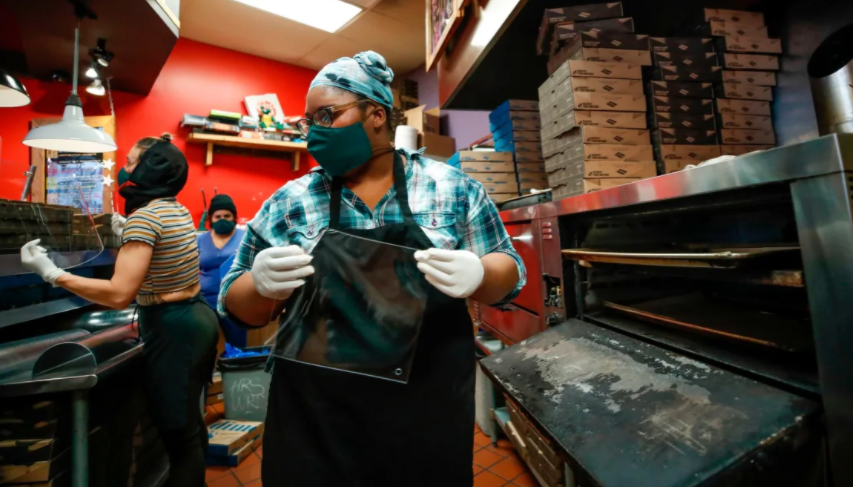An innovation strategist lays out 6 ways leaders can make their companies more agile and able to survive the current crisis—and beyond.
One of the key lessons coming from the COVID-19 pandemic is the need to create more resilient companies. Many organizations think they are resilient, but they are not. The U.S. has lost more than 100,000 businesses due to the virus, seen millions lose jobs, and is experiencing dismal short-term financial and economic outlooks. How does an organization survive and even thrive?
Resiliency is the key.
What does being a resilient company mean? How does a resilient company look and what differentiates it from others? How do you create a resilient restaurant or professional services company?
Resiliency is measured by a company’s ability to survive VUCA events such as the pandemic. VUCA stands for the volatile, unpredictable, complex, and ambiguous elements that an organization could face. A resilient company must be prepared, act quickly, and get positive results during the storm, which will eventually lead to coming out of the storm with a positive moment for growth. Resilient organizations will not only survive, but also grow faster than their less resilient counterparts, according to McKinsey research, which also showed that less than 10 percent of publicly traded companies pre-COVID were resilient.
No one could have predicted the complexities and impact of COVID-19. The only thing organizations can do is find ways to survive during the pandemic. How do you survive during a VUCA storm?
You innovate—and find ways to do so quickly and inexpensively. There have been many inspiring stories of companies that reinvented themselves during the pandemic. For example, a pizzeria in Chicago that normally sells to dine-in customers could no longer sell enough pizza due to the lockdown. So they completely reinvented. They saw a need and pivoted their business by utilizing their assets to make a much-needed product during the pandemic: face shields for frontline medical personnel. They retrained employees and used their pizza ovens to make and shape face shields—5,000 of them a week. The business is not just surviving, but it is performing at the same level as it did before, and providing a critical service. When the lockdown is lifted, this company will have two business opportunities that it can grow.
Resilient companies have a method to understand and evaluate opportunities, so they can create value quickly with the resources, knowledge, and networks they already have. This guides their pivoting decisions.
Resilient organizations make efficient decisions on pivot direction and they innovate quickly to get the results they need to survive, without consuming much time or resources.
How well a company can pivot is dependent on its agility levels. To really benefit from pivoting decisions, you must have financial options and a safety buffer, an optimized cost structure, countercyclical products or just-in-time products, fast learning loops, new leadership practices, people-centered culture, and a reliable supply chain. Here is what that looks like:
FINANCIAL AGILITY
Look for ways to secure additional funding, develop flexible payment plans, and find ways to lower the cost of goods including the cost of production, cost of labor, supply payment terms, and cost of infrastructure and logistics.
PRODUCT AGILITY
One way that a business can find an opportunity to be profitable while everyone else is going through financial hardship is to find something that people are willing to pay for, even during tough times—in the case of COVID-19, virtual offerings, food deliveries, medical technologies, digital and drug research, to name a few. These countercyclical and just-in-time products can save your business. Consider how your company can pivot production of something that is of less value now to something that is more valuable quickly and profitably.
LEARNING LOOP AGILITY
Organizations going through hardship are often not as eager to learn new things. They focus on protecting what they have instead of growing. Resilient companies continue to learn, despite the circumstances; they experiment and add value iteratively and consistently. Evaluate how well your organization is experimenting, learning, and growing right now.
LEADERSHIP AGILITY
Nothing tests the leadership of an organization like a significant VUCA event. Resilient companies have conscientious leadership, with proactive leaders who are willing to distribute decision-making and learning, so the organization can move faster. Leaders must be willing to learn, share power, and create room for more risk as everyone experiments.
PEOPLE-FACTOR AGILITY
People react to stressors differently. An agile organization is cognizant of this fact and empowers its people to stay healthy and recover quickly. A resilient organization is ready to quickly address people-related challenges, so it can keep the innovating workforce engaged.
SUPPLY CHAIN AGILITY
Resilient organizations build a strong network of sourcing inputs and distributing products and/or services to clients. This may mean multiple suppliers of the same raw materials or service providers, and having several logistics partners or modes of service delivery, both in person or virtually.
Agility must be built throughout the organization in order to accelerate decisions, innovate faster, and scale into opportunities at the speed needed to capitalize. If you want to survive and be ready for growth after the COVID-19 storm, you now have the answer: agility is the ultimate secret to building a resilient organization.





